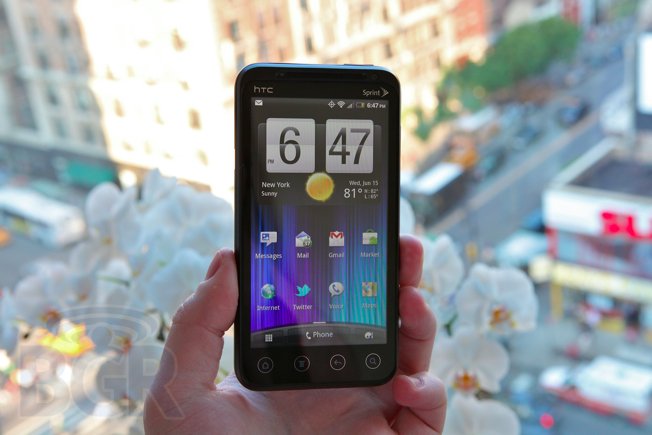HTC EVO 3D Review
The HTC EVO 4G is definitely one of Sprint's most popular smartphones. In fact, even almost a year after its release, it's still selling like hotcakes. Sprint faced serious demand issues with the EVO 4G well after the launch, and the nation's first 4G smartphone is still one of the best. Let's talk about the HTC EVO 3D, though. The follow up to the original HTC EVO 4G is packed to the brim with features, and will be the first 3D-capable device on the market when it launches. Is the HTC EVO 3D a better phone than the original EVO 4G? Does the addition of a 3D display add real value to the phone or is it just a headache-inducing novelty, as it is on other portable devices? Hit the break to find out.
Hardware / Display
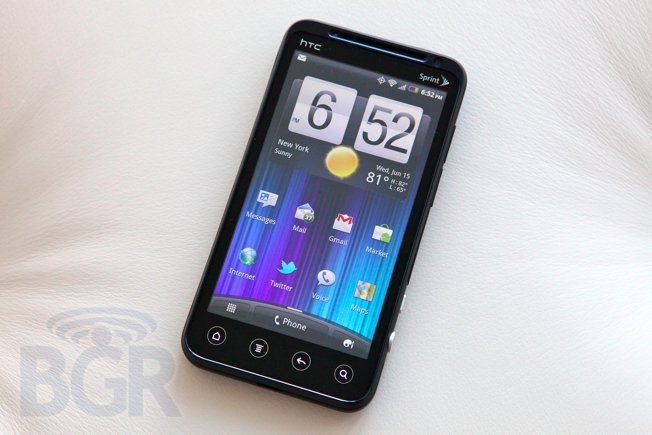
The HTC EVO 3D builds on the original EVO 4G in every way possible. It's thinner, it feels better in the hand, and it's way more powerful. While the first EVO featured a 1GHz processor, the EVO 3D runs a smoking 1.2GHz dual-core Qualcomm CPU with a 4.3-inch 960 x 540 qHD display, dual 5-megapixel cameras around back for 3D photo and HD video capture, 1080p HD video playback, a front-facing camera, and a whopping 1,730 mAh battery.
The device stays true to some of the first EVO's styling cues while introducing a much more refined, almost retro look if you will — at least from the back. The front of the device sports an anodized black aluminum frame and the Android menu buttons below the screen look almost identical to the original 4G device. An addition this time around is a dedicated two-step camera shutter button on the right side complete with 2D / 3D switch to toggle 3D capture for photos and video. While a dedicated camera shutter button is great, I'd actually have preferred one a little smaller, as I hold the device in my right hand mainly when I'm using it and the shutter button can get in the way sometimes.
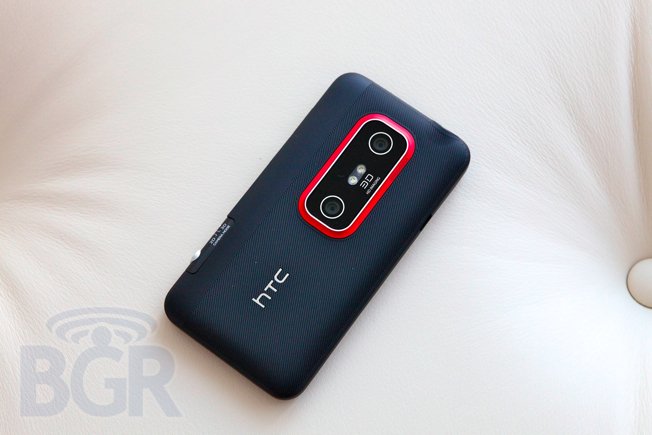
You'll also find a volume up/down key on the right side. On the left side you'll see a lone microUSB port, and toward the top of the EVO 3D there's a 3.5mm headset jack and a power button. Unfortunately, the power button has little to no tactile feedback, and it makes locking and unlocking the EVO 3D somewhat tedious. The EVO 3D feels incredibly solid and well-built though, and while the diagonal grooved pattern on the rear battery cover could be considered distracting at times, it feels worlds better than the EVO 4G.
The display on the HTC EVO 3D is an interesting subject. On one hand the display is pretty sharp, colors look great, and it's decently bright. On the other, because of the 3D stereoscopic screen overlay, it's not as sharp as other HTC devices like the Sensation 4G. More on that shortly.
Software
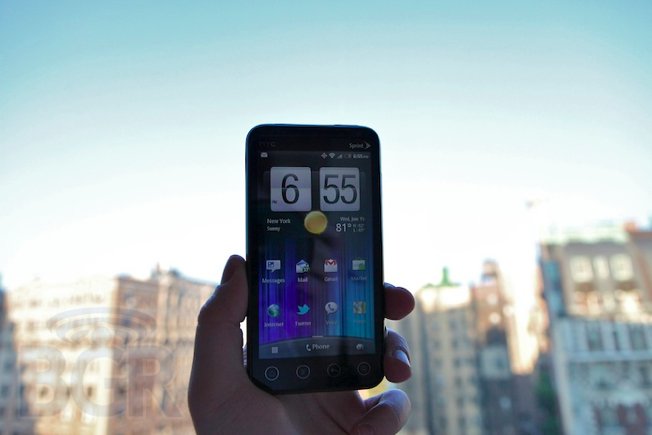
The EVO 3D runs HTC's latest Sense 3.0 user interface, which is identical to the HTC Sensation 4G I recently reviewed. As such, there's not much need to go over everything again. In the case of Sprint's new EVO, Sense blends its nifty 3D effect with an actual 3D-capable display making for a much more cohesive experience for consumers. I was actually a tad bit disappointed that more of the device wasn't "3D" at first, as I figured HTC and Sprint would extend the 3D capabilities beyond just photo / video capture, and video playback. Instead, I haven't noticed much if any difference between the Sensation 4G and the EVO 3D as far as HTC's UI is concerned. Regardless, the 3D effects on HTC Sense 3.0 are decent enough.
3D
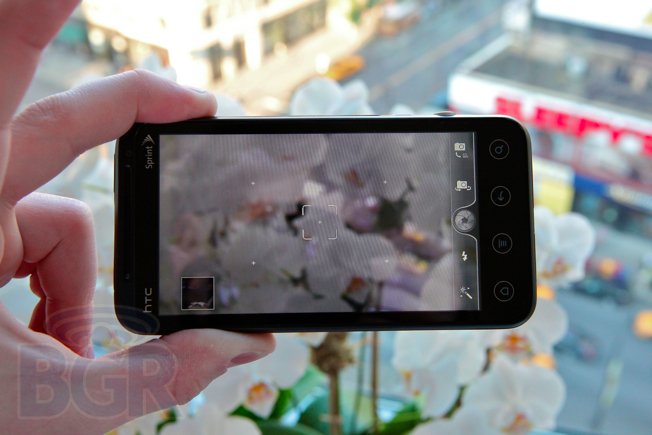
While 3D televisions are still lackluster, glasses-free 3D works much better on a mobile device in my opinion. One of the great things about the EVO 3D is that the screen doesn't require you to wear glasses to view 3D content (can you imagine having to wear a pair of 3D glasses when looking at your smartphone?). The stereoscopic screen is decent. It's two panels that make one, in straight up terms, and you have to have a perfect viewing angle in the middle of the device for it to work, otherwise you'll see two images overlaid on each other and won't get the actual 3D effect.
After using the device for around 10 minutes on and off, I finally got the hang of the perfect positioning, and 3D content looks good, not great. The effect seems pretty natural, though the screen itself has what looks like ridged scan lines running through the display. It's not always overly noticeable, but I'm someone who notices something if it's off by a pixel, and this screen sort of looks like those old hologram baseball cards that you'd turn left to right to see an animated scene.
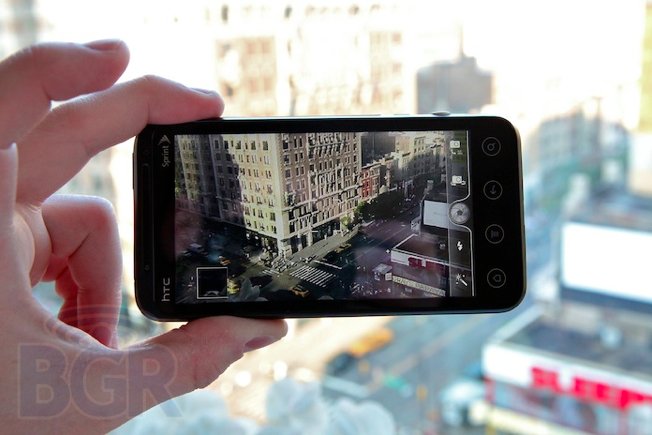
As far as the 3D content, you have the ability to capture 5-megapixel images in 3D or 720p HD video in 3D. With an HDMI-out port that also doubles as a microUSB port, throwing your 3D content onto a 3D-capable TV or display couldn't be easier: just connect that micro-HDMI cable and you're good to go. I like the ability to sort of future-proof your content by taking 3D stills and videos.
The EVO 3D also comes preloaded with The Green Hornet movie in HTC's Watch movie service for free, though I couldn't get it to load no matter how hard I tried. I kept getting a "downloading license" message and no movie, but hopefully this issue is ironed out ahead of launch. There's also a 3D Spiderman game that looks pretty decent, though it's more of an arcade-style ordeal. Besides other 3D games available to purchase from Gameloft, YouTube now supports 3D content on the EVO 3D, and there is a little icon next to the video letting you know it's available in 3D.
Phone / Speakerphone
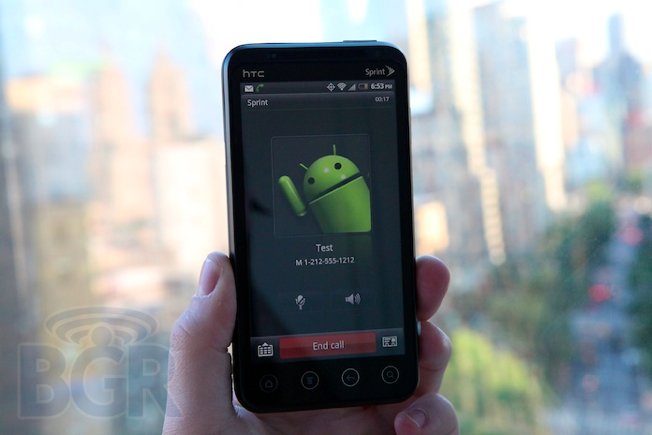
Using the phone on the EVO 3D hasn't been the best experience. Phone calls sounded distorted most of the time with the earpiece speaker, callers sounded hollow and thin, and volume wasn't too great either. Signal reception is a different story, as the EVO 3D performs great in this department. Sprint service typically isn't incredible, but the way the EVO 3D latches onto signals make it that much better.
The rear speaker on the EVO 3D performs pretty well. It's pretty loud, though it lacks some low and mid-range oomph and it lacks projection as well. The speakerphone fares about the same — it's loud, but not that loud, and it's a little flat.
Battery
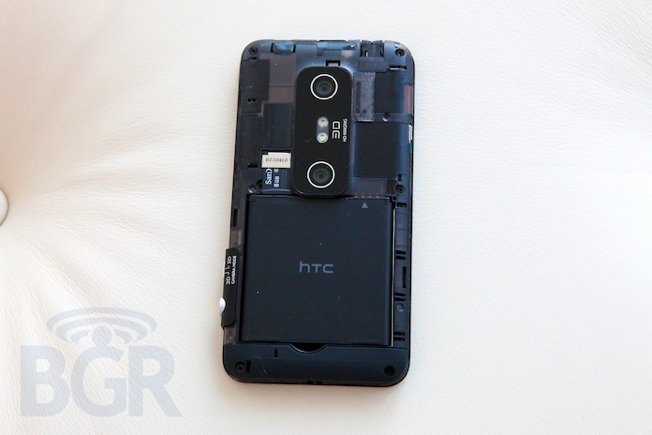
The EVO 3D packs a huge 1,730 mAh battery, and while you'd think that was enough, you kind of have to think again with a 4G-capable device. In 3G mode the EVO lasts for up to a day with moderately-heavy usage. With 4G WiMAX on and connected, however, that quickly drops to around 4-5 hours of on and off usage. It's better than the first EVO, but it's definitely not ideal. If you don't live in a 4G service area, the EVO 3D should be able to get your through a day under normal circumstances. Light up 4G, and you'll probably have to recharge some time in the early afternoon unless your phone just sits idle on your desk all day.
Conclusion

HTC's EVO 3D is the first device to hit the market in the U.S. with a stereoscopic 3D display, but that's just an added feature. At the end of the day, the EVO 3D is a better, faster, thinner, lighter, and more capable EVO 4G. The battery life is slightly better, the screen has been improved, there's a dual-core 1.2GHz processor, 1080p HD video capture, and plenty more. The 3D part is just a nice add-on.
I actually liked being able to take photos and videos in 3D and play them back right on the device. I also enjoyed hooking the phone up to my 3D television and playing back the content in 3D. Like I said earlier, I like future-proofing content, and I'd rather have 3D content that 2D content if I can.
It took a couple days for the HTC EVO 3D to grow on me — from the build and design, to the user interface, to the 3D aspect — but after spending a week with it, I can confidently say this is my favorite Sprint phone, hands down. The Motorola Photon 4G is interesting, and from what I saw I liked it a lot. The EVO 3D, however, offers a complete end-to-end Android experience with HTC's Sense 3.0 UI, and coupled with improvements in every area over the original EVO 4G, plus the ability to capture and view 3D content, it makes for one hell of a compelling package.
The HTC EVO 3D will be available from Sprint for $199 with two-year agreement starting June 24th.
